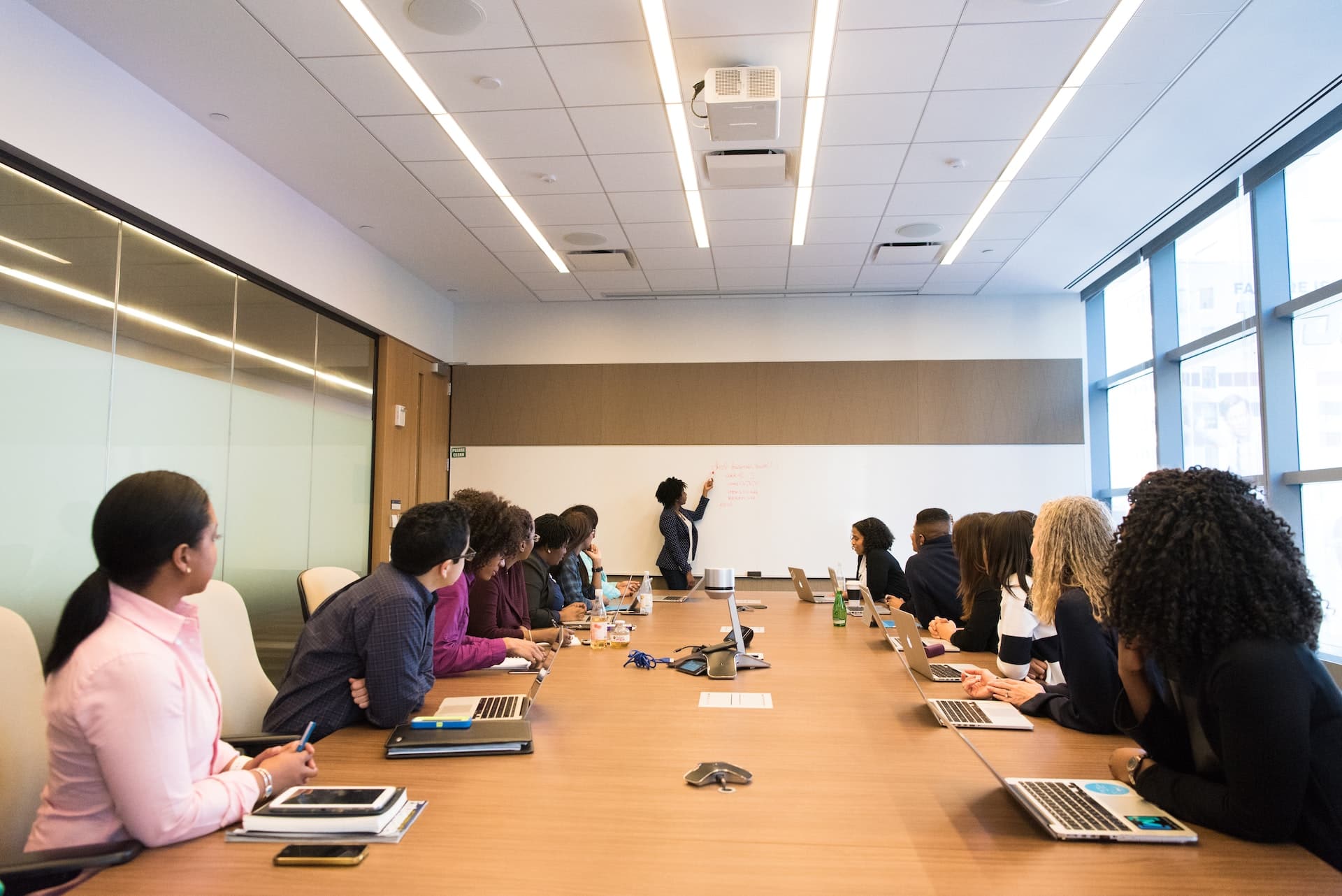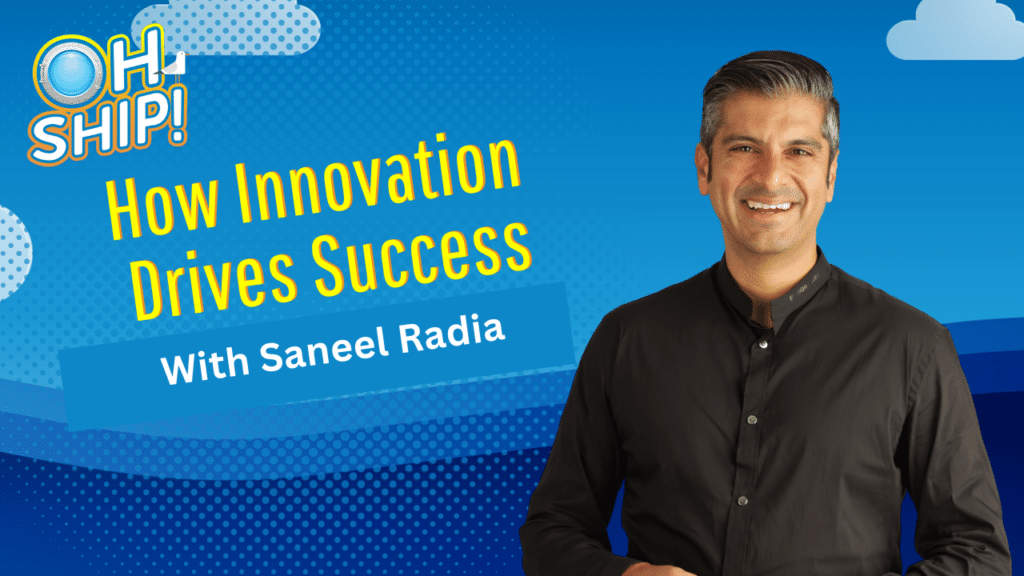Saneel shares advice on building a fellowship of business partners, how innovation happens, and looking at tech through an ethical lens.

Saneel Radia is the CEO and CIO of Proto, an innovation consultancy that helps companies navigate disruption. A serial entrepreneur, he’s also a board member at 4As and +POOL, a floating pool concept that will soon be located in NYC’s East River! He served as chief innovation officer at R/GA and founded brand incubator Fitch15, among many other accolades, giving him a vast experience with innovation in the corporate world. In a conversation with Freddie, he shares advice on how to cultivate innovation in your business when faced with disruption, cultivating fellowship on a team of 7 founders, and ethical questions around technology.
Transforming Through Innovation: 3 Elements of Success
To deal with disruption, you need to do two things well, says Saneel: accept the need for change and learn to measure success differently. Both are easier said than done.
Accepting the cultural change
Proto works with both small disruptors and big legacy players dealing with the disruption. “Ability to accept the cultural change, as small as that sounds, is actually probably the most consistent corollary to success,” Saneel emphasizes. If you’re truly embracing the change rather than dragging your feet and lamenting the fact that you have to adjust, you’ll respond more effectively.
What if you embrace change, but your company doesn’t?
Being the one person who welcomes change on a big board of long-tenured people puts you in a tough position, he asserts. If you’re the “new blood” who’s been brought in to cultivate change or even help the company find alignment, you may need to bring along reluctant people.
As Freddie adds, you may rationalize the need for change only to confront irrational resistance to the needed cultural transformation. People have deeply personal feelings about it. Self-preservation is definitely a factor here, Saneel agrees—people wonder what role they’ll have in the wake of the change.
“You all showed up together to achieve this broader purpose, but you have to be flexible in your mindset about how you get to that purpose,” he asserts. “You still believe in the bigger ambition of what you’re doing, but the how has changed.”
People want assurance that they still share the purpose they signed up for, he emphasizes. “If you change the what, no one will come around.” Instead, show them that the how has changed, but not the what.
Using emotional intelligence to adept
Emotional intelligence is the key ingredient to transformation, Saneel says. So at Proto, they try to hire folks with high EQs. “That really is our biggest differentiator,” he affirms. Those who are able to have empathy for others who feel stressed about change, rather than hammering on about best practices, will help their team succeed.
Every company has its distinct strengths, cultural principles, mission, and vernacular that affect how it deals with change. What’s relevant to one will be different from what’s relevant to another. “If they are a purpose-led company, their purpose should be different from their competitor’s purpose. There’s some higher order that they’re pursuing,” Saneel says.
Proto recognizes all of this while helping companies transform. It’s less about finding the right process or widget and more about learning what makes them unique, then centering that in the response to change. “We’re gonna go on a journey together,” he lets clients know. “I have empathy for you on this journey because it is hard—it’s always hard, even if you know it’s good for you.”
Empathy doesn’t mean being highly charismatic, he notes. “We have a ton of weirdos,” he laughs. You don’t have to be gregarious—you just have to be able to put yourself in someone else’s shoes.
Empathy is hard to hire for, he adds. You can’t see it on LinkedIn. In the past, he’s mistaken charisma for empathy, and when things got stressful, those colleagues were too domineering. Just try to have candidates meet a lot of people before making a hire to see if everyone perceives them as empathetic, he advises.
Learn to measure success differently
If people are genuinely open-minded to change and adaptation, that’s huge. “Are you willing to measure a new business, or a new offering, or a new approach by a different metric than your old approach?” Saneel posits. You need to say, “Somehow the value proposition of what we do is different now, so we have to measure it differently,” he explains. Clients who achieve cultural acceptance of change and adopt a new measuring stick have the highest success rate, he asserts.
Dealing with Ethical Questions Around Tech
Proto’s definition of innovation is “the introduction of something new and relevant,” Saneel says. “You’ll notice the word ‘technology’ isn’t even in that definition,” he underscores. While tech is a key enabler, innovation isn’t about the technology.
“Technology is an enabler for what we do as humans,” he asserts—it’s neither good nor bad. So, whether you’re creating a new technology or coming up with innovative ways to use an existing one, have an ethical mindset, he urges.
Proto strives to work with only purpose-led companies, helping them translate what they’re trying to do into ethical practice. “It’s our job to make sure there’s an ethical layer there,” he affirms. If a technology will save you costs on workers, you need to think about the implications for them. Or if you’re aiming to use machine learning, make sure you’re planning to monitor the implementation with an ethical lens.
Finding Fellowship in Innovation

There’s a dominant trope of the white male visionary who knows what the world needs before people know they need it. “And yet when we looked into how innovation works over history … two things emerge immediately. First of all, that story’s almost always false,” he says. “Actually, there’s almost always a diverse team—and I mean cognitively diverse, and thank God—and recently, much more ethnically diverse as well.”
“That group of people generally all led at different times along the way of that project,” he continues. They all knew when it was time to let someone else step up and lead. This fellowship aspect of innovation usually gets left out. But in Proto, it guides their approach—their cross-disciplinary team of founders includes diverse perspectives while placing everyone on equal footing. They believe in the principle of “know when it’s your turn to follow.”
They also believe in learning from the people they’re designing for. In addition to asking people for input, they use ethnography as a tool. “You also watch them and actually see, well, how do they experience things, really? And then what are our observations of what it is that they’re actually doing, regardless of what they’re saying?” Saneel explains. “And of course, there’s always gonna be a delta in what someone tells you and then what they do.”
Disagreements are the biggest challenge, he says. “Eighty percent of the time we disagree,” he acknowledges. “We actually went out of our way to make sure that we have people who don’t see the world eye to eye.” Considering whose lead to follow creates tension, which means learning to check their egos. It’s not about being right; it’s about getting to “right” together, he emphasizes.
“At the end of the day, you can get a lot of things wrong,” he asserts. “You can survive most errors you make, as long as you’ve learned from them.” They say, “We reserve the right to get smarter.”
Having a good sense of humor is essential too, adds Freddie. It can quickly defuse tension and stress. Saneel agrees, noting that people can take their purpose very seriously without taking themselves so seriously. Real confidence allows you to show the things that go wrong and laugh at your mistakes, he asserts.
A Tough Career Moment
Saneel started in advertising and worked with BBH, which was famous for the launch of Google Chrome. They were making a TV ad for Google that would go live at a big awards show, centering on the campaign “It’s Get Better,” which supported LGBTQ kids.
In perhaps the final 24 hours before the awards show, they realized they hadn’t gotten the rights for 35 celebrities for their video. If they aired it, they’d open Google to an array of lawsuits. But they quickly got signatures from all but one person, who was holding out for more money—which wasn’t going to happen at that point. Would they just have eight seconds of dead space in the video? they wondered anxiously.
But they reached out to Lady Gaga, who had recently expressed interest in filming something together. She got her phone and filmed herself talking backstage, filling in precious seconds of dead space in the video! In the nick of time, they got it put together and ready for the show.
Today, Saneel is looking forward to the development of +POOL, a water-filtering plus-shaped pool floating in the East River. In NYC, swimming is largely inaccessible for those who aren’t wealthy, he says. The team at +POOL is working to create a prototype with unfiltered water that has a beach area the public can access, to test use patterns. Look for +Beach in the Two Bridges Community on the Lower East Side in the coming months!
Follow Proto on LinkedIn at WeAreProto, or find Saneel on Twitter @Saneel.





